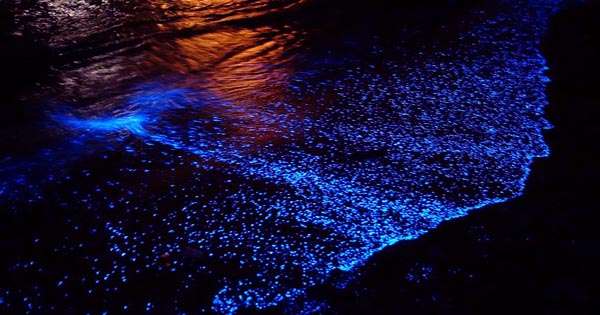One of the wonders of nature, a glittering blue color in the water submerged from the shore of a breaking wave on the shore, or even a rock is thrown into the water. Now and then our bottom lines are attracted to billions of delayed unicellular organisms that get annoyed and create beautiful light. Shakespeare and Darwin praised the event, and in recent years photographers have allowed us all to witness it. Yet, both evolutionary and physiological factors are rarely understood.
Cambridge University professors Raymond Goldstein and Dr. Maziyar Jalaal are trying to explain why dinoflagellates, commonly known as “sea sparklers”, do not produce their light, but the forces that trigger it.
In the physical review sheets they were used as a result of the distortion of the cell membrane p. lunula emits a flicker of light, moreover, the more the wall of its chamber pushes out of size and the faster it happens, the brighter it becomes. It probably avoids the organism by expending too much energy in response to small disturbances. Using a variety of tools, from Goldstein and Jalaal microscopic cantilevers to liquid jets, Pyrocystis lunula presses on a cell wall.
Interestingly, the light curve has the same size even though the pressure is applied more quickly even though it produces a brighter flash. Light is produced as the pressure is reduced and the shape of the room is restored. However, each organism can produce only so much light without time to recover – repeated application reduces the brightness.
Goldstein said in a statement, “Despite decades of scientific research, primarily in the field of biochemistry, the physiological process by which liquid flow drives light production remains unclear.” “Our findings reveal the physical process by which fluid flow begins to produce light and shows how elegant decisions can be made at the unicellular level,” Jalaal added.
The authors believe that when pressure is applied to the membrane, the ion channels of the cell allow calcium to be transferred to different parts of the cell by opening, which is known as the vascular effect. As a result, it triggers chemical reactions that lead to the release of energy over wavelengths that we can see and appreciate. The paper notes, “The production of a given amount of light … can be achieved through activities that employ many channels poorly, or employ a small number of strongly.”
In the case of some animals, bioluminescence serves a clear purpose, usually to attract mates or prey. The advantages for outstanding, photosynthetic dinoflagellates are less obvious. It is thought that they may use light to attract animals to food chains that feed on dinoflagellates, such as grass, as lions may say when zebras take it, perhaps avoiding threats in the process.












